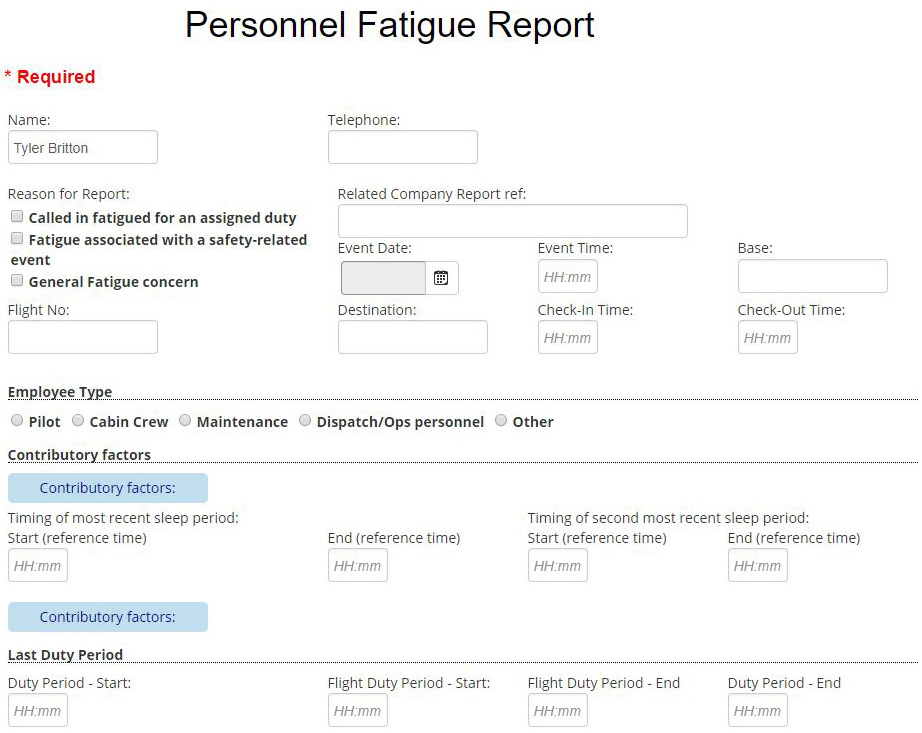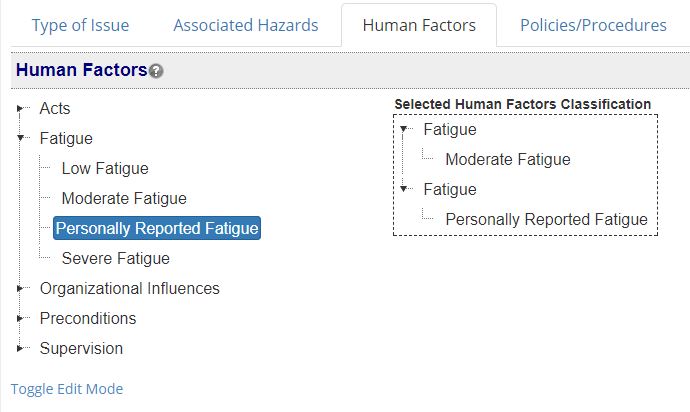Why Fatigue Monitoring Matters

Fatigue is the sixth of the Dirty Dozen Human Factors.
Fatigue has traditionally received a lot of attention from flight crew due to the dramatic effects of the different types of fatigue on pilot and cabin crew performance.
One of the primary challenges associated with fatigue in the workplace is that the symptoms of fatigue are other Human Factors. Consider that a person dealing with fatigue will:
- Have less situational awareness;
- Be more easily distracted;
- Affect mood, such as making them harder to work with or less communicative; and
- Have a harder time managing stress.
Fortunately, unlike many of the other Human Factors, such as Complacency or Communication, fatigue can almost be controlled directly with fatigue risk management. Fatigue risk management is a three-pronged approach to controlling risk that involves:
- Fatigue risk controls;
- Acquiring fatigue data; and
- Monitoring fatigue data.
Here is the five-part process to monitor fatigue in your aviation SMS program.
1 – Have Fatigue Reporting Policy
Acquiring fatigue data, such as through fatigue reports, is the cornerstone of monitoring fatigue in your operational environment. However, employees may be reluctant to report fatigue issues.
To combat this, you need to have a couple of pieces of Safety Policy that are clearly distributed and reinforced in your organization:
- A mandatory reporting policy for fatigue (either seen in others or experienced in oneself); and
- A non-punitive reporting policy that reinforces the fact that reporting oneself for fatigue reports is encouraged.
These policies should be regularly communicated to employees.
2 – Have a Custom Fatigue Reporting Form

Acquiring fatigue data is the cornerstone of your process to monitor fatigue in your aviation SMS program. This simply involves having a custom report for fatigue as a part of your hazard reporting process.
In manual hazard reporting processes, such as with paper reports, you should have a physical copy of a special fatigue report. In aviation SMS software, you should have a special fatigue report as an option when submitting safety issues.
The custom fatigue reporting form should include all relevant details of fatigue, such as:
- Duty periods;
- Contributory factors;
- Physical symptoms;
- Cognitive symptoms;
- Level of alertness; and
- Other basic details (flight number, actions taken, etc.).
Including all of this information allows for complex data mining in the future, and provides management with all the data needed to manage the safety issues.
Related Articles on Fatigue Risk Management in Aviation SMS
- 3 Ways for Dealing With Fatigue Risk Management in Aviation SMS
- How to Incorporate Fatigue Risk Management into Aviation SMS
- Winter Fatigue Hazard Register Review - Aviation SMS SRM & SA Example
3 – Include Classifications for Various Levels of Fatigue

You should have various classifications when that you can assign to safety issues, such as:
- Type of issue;
- Hazard;
- Root Causes;
- Human Factors.
In your classifications, you should have several different types of classifications for fatigue. For example, you might have the following fatigue classifications:
- Personally, reported fatigue;
- Fatigue reported before hazard occurrence;
- Fatigue reported after hazard occurrence;
- Moderate to severe fatigue symptoms; and
- Mild to moderate fatigue symptoms.
You should include your fatigue classifications in Human Factors, Root Causes, or Type of Issue, depending on which classification types you are using.
4 – Have Automated Fatigue Report Charts

Monitoring fatigue performance in your aviation SMS program is as easy as monitoring safety charts of fatigue classifications. Having automated fatigue reports will greatly aid you in doing this. An automated fatigue report chart will:
- Automatically update when a new fatigue classification is assigned; and
- Show numbers for each fatigue classification over time.
Viewing fatigue charts over periods of time allows you to:
- See trends in the number of fatigue reports over time; and
- Compare the current time period to previous time periods.
Ideally, you will see a consistent number of fatigue reports AFTER you implement your fatigue risk controls. This indicates that people are reporting fatigue. Also, seeing a majority of classifications as “personally reported” and “low-moderate fatigue level” indicates that employees take fatigue seriously and are proactively taking steps to mitigate it in the operational environment.
5 – Implement Fatigue Risk Controls and Monitor Them
To practice fatigue risk management, you need to implement fatigue risk control measures. This may include things like:
- Mandatory fatigue reporting policy;
- Fatigue test before flights;
- Mandatory reporting of pilot duty time; or
- Policy regarding duty times of flight crew.
As you monitor your fatigue classifications, you may need to update or create additional risk controls. You know controls are working when you have a consistent number of fatigue reports that are reported proactively.
You will find this quiz helpful in grading the quality of your SMS program:
Last updated November 2025.





